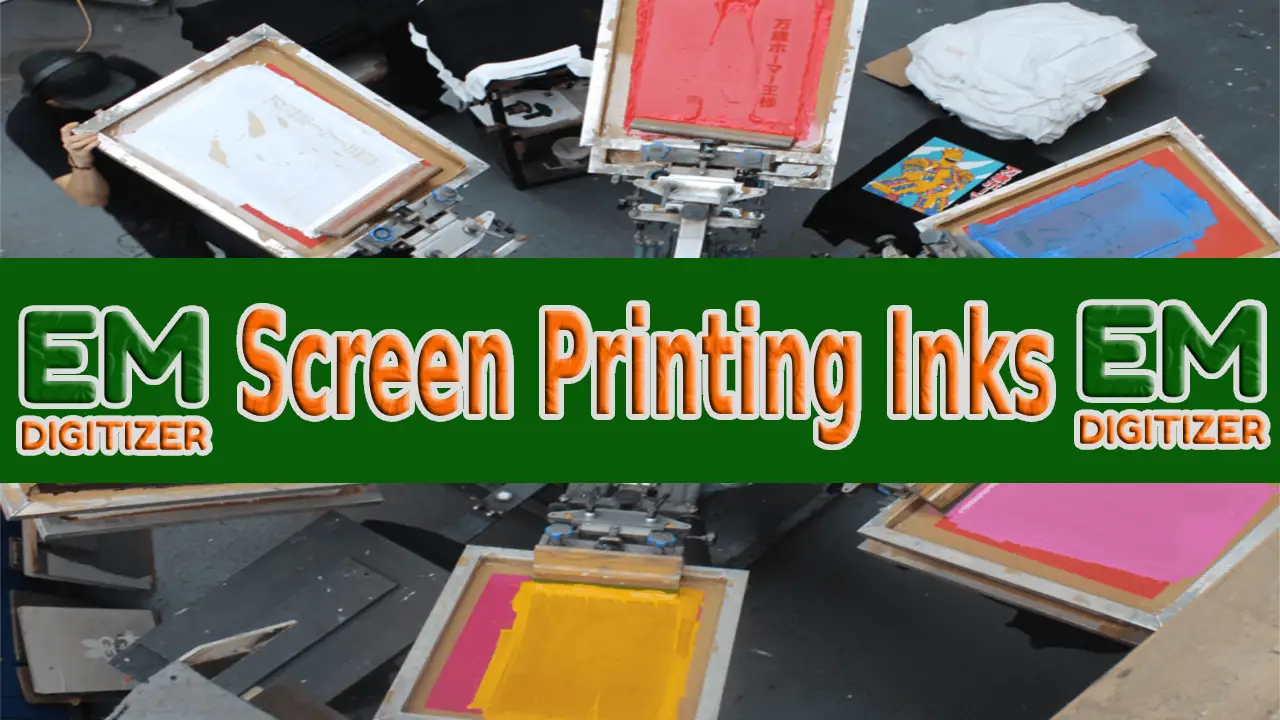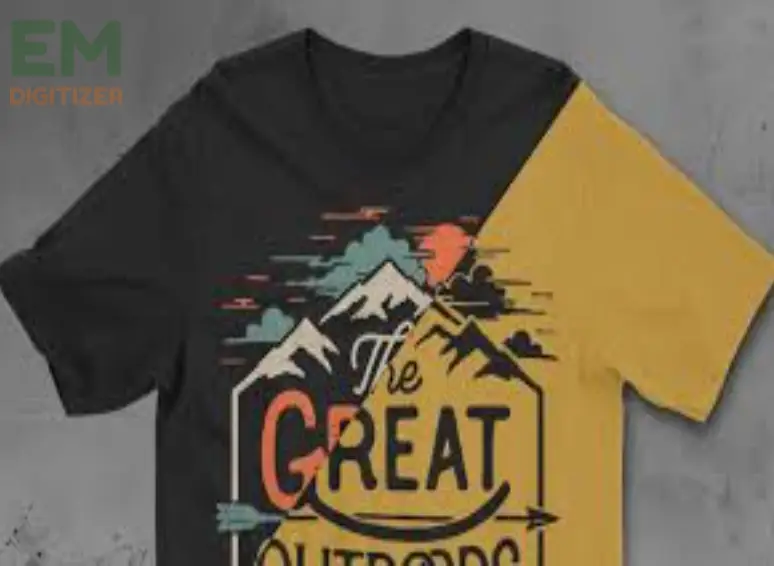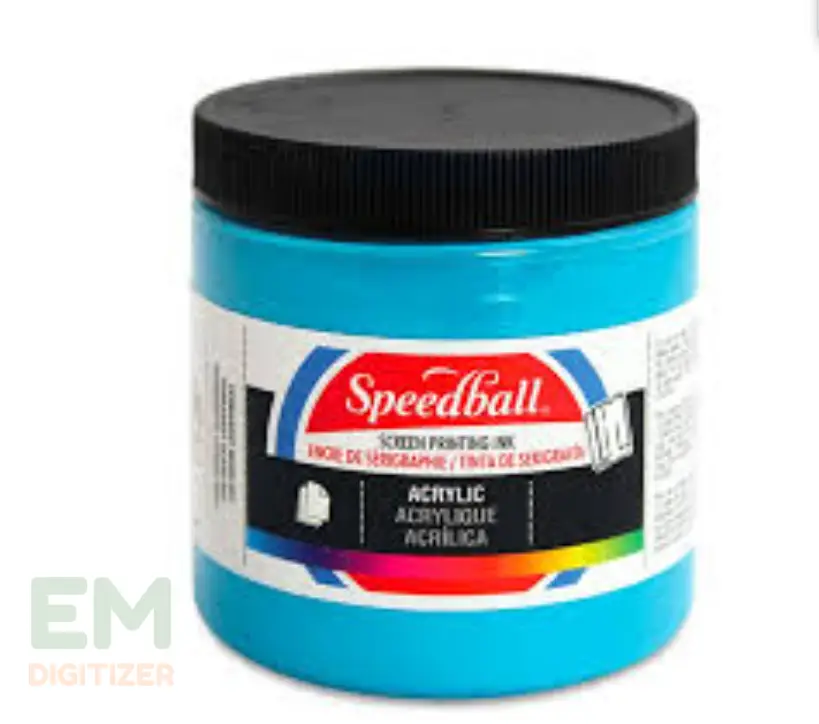Types Of Screen Printing Inks

Nobody can deny the value of using the appropriate ink for printing needs. This printing sector is expanding rapidly due to its great use.
Most people prefer screen printing over all types. Due to its high demand, your choice of ink must be excellent.
People still have doubts related to the suitable inks, which brand is trustworthy, and where to acquire screen printing inks. So, here is a suggestion for you.
Keep in mind your printing material and cost, Let’s look at the most popular screen printing inks and what features to look for.
If you are looking for embroidery digitizing services, EMDigitizer is one of the best embroidery digitizing companies. Providing all types of embroidery digitizing Services. I recommend you try digitizing services.
Order NowGet Free QuoteTable of Contents
Table of Contents
Overview
People and their choices are becoming advanced in this ultramodern period. The printing sector is experiencing continuous development due to its versatility.
If you want to get knowledge about Embroidery Vs Screen Printing, then you can visit: Embroidery Vs Screen Printing

When you think of crisper and more beautiful prints, what kind of printing comes to mind? Screen printing is your response, and it’s perfectly ok to say.
If you want to get knowledge about DTG Vs Screen Printing, then you can visit: DTG Vs Screen Printing
About Screen Printing Inks:
A standard ink can be utilized for any printing type, but screen printing, often called silk printing, involves specific inks. This type of printing, due to its dense nature, requires premium inks for use on clothing and promotional items like banners.
Thus, to meet client needs, the majority of printing experts usually use screen printing inks. So when purchasing inks, consider the following points:
- Does it fulfill your printing needs? (Ease of use, density, reliability, mixing time, transparency, etc.)
- Keep your budget in mind.
- When choosing an ink type, consider the kind of glow you would like to see in your printed product.
- Check for the curated time and technique they use, as water-based and oil-based inks vary in composition.
Types of screen printing inks:
When searching for highly suggested screen printing inks, here’s the list:
Plastisol Printing Ink:
You’ve surely seen this type when searching for what ink to choose as it’s always at the top. It is the most reliable ink made for printing clothes and accessories.
It is composed of PVC which allows it to be more viscous. Despite its composition, it is easy to work with ink due to its settlement and easy mixing.
This ink can stay on screens smoothly due to its shelf life. So you will get high-quality finished printing design on your favorite article even with a low budget.
It is useful for multiple printing materials but resists bonding with glass and metallic objects.
So what about curated ink time? When the ink is set up to 290F, it starts solidifying to give a vibrant print.
Drawback:
- It accumulates along the shirt’s hems.
- It is not suitable for glass
- Start melting at high temperature
Water Based Inks:
It is the second-best option for screen printing inks that are suitable for mixed garments. Every shop and printing business should have this water-based ink on hand.
When it comes to its features, they set a thin layer over textiles. It is easy to clean and dry as water evaporates faster to give smooth prints that won’t fade early.
Using this ink lets fashion industries create high-class apparel with a soft feel. With a larger mesh count, it produces incredible effects even with minimal ink usage. There are other categories for this ink type, which I will probably cover in my next blog.
Drawback:
- This ink isn’t curated easily, so most printers won’t find it the best option.
Discharge Screen Printing Ink:
Have you ever seen a print that, rather than being imaginary, makes you feel something real? But with discharge ink, it is possible. This ink acts as a bleach, but it doesn’t change the color of the natural material. It also functions as a base color for printing an attractive look on dark garments.
For this reason, it is commonly used over pure cotton fabrics in most printing firms. Its simple application on a variety of substrates makes it an excellent choice for screen printing inks.
It involves the use of a heating source for drying purposes and takes more time in a humid area. So you need to be an expert for its application.
Drawback:
- Be careful when curing discharge ink as it requires complete ventilation.
Acrylic Printing Ink:
This ink has been included in the list of the best screen printing inks because it can be used to print on flexible fabrics like polyester. Managing these textiles can be challenging, particularly when printing is involved and causes discoloration.
So, I highly recommend printing these materials with acrylic ink, which is also water-based. Such inks have good air-drying properties and require less time to settle on materials.
Drawback:
- Requires proper knowledge for use on screens
Silicone Printing Ink:
These inks are rather expensive but have good printing properties. This ink works best on your screen if you want to print your favorite character or alphabet over nylon or any other mixed fabrics.
Its ability to hold printing on rigid or elastic materials contributes to its great demand. For striking prints, the majority of the best-rated brands use this ink extensively.
However, some users argue that it is not as sturdy as it should be. Although it has numerous applications, it only operates for a limited time, which reduces productivity.
Drawback:
- Silicon inks require proper handling skills and care when applying.
- Less durable
Conclusion
This is all about the best screen printing types and why they are standing on top. There is a slight difference in plastisol and water-based inks. It depends on the project type and printing materials.
Discharge inks, however, are also becoming a growing trend over time because of flexibility. And working with nylon and other elastic materials becomes easy with the use of silicon and acrylic inks.
With this blog, I hope to assist you in identifying the ideal fit for your project type and application. Check their benefits and drawbacks to ensure your purchase is worthwhile.
It is another kind of water-based ink. When used in printing procedures, acrylic ink has good quick-drying features. As the polyester fabric is tricky to handle, it usually takes less time to settle over the fabric.
Although plastisol gives more vibrant and durable prints, when exposed to extreme heat, it gets cracked. This ink is best to use with a variety of materials, but don’t make bonds with metallic and glassware.
As the name suggests, it has plastic material to some extent in the form of acrylic and formaldehyde gas. They emit harmful fumes so you need to put on protective wear when handling this ink. Overall, it is the best choice for screen printing items.
If you have any questions leave the comments or you can visit our social channels for more updates regularly. We provide embroidery digitizing services if you need digitizing services feel free to contact us or email us.



